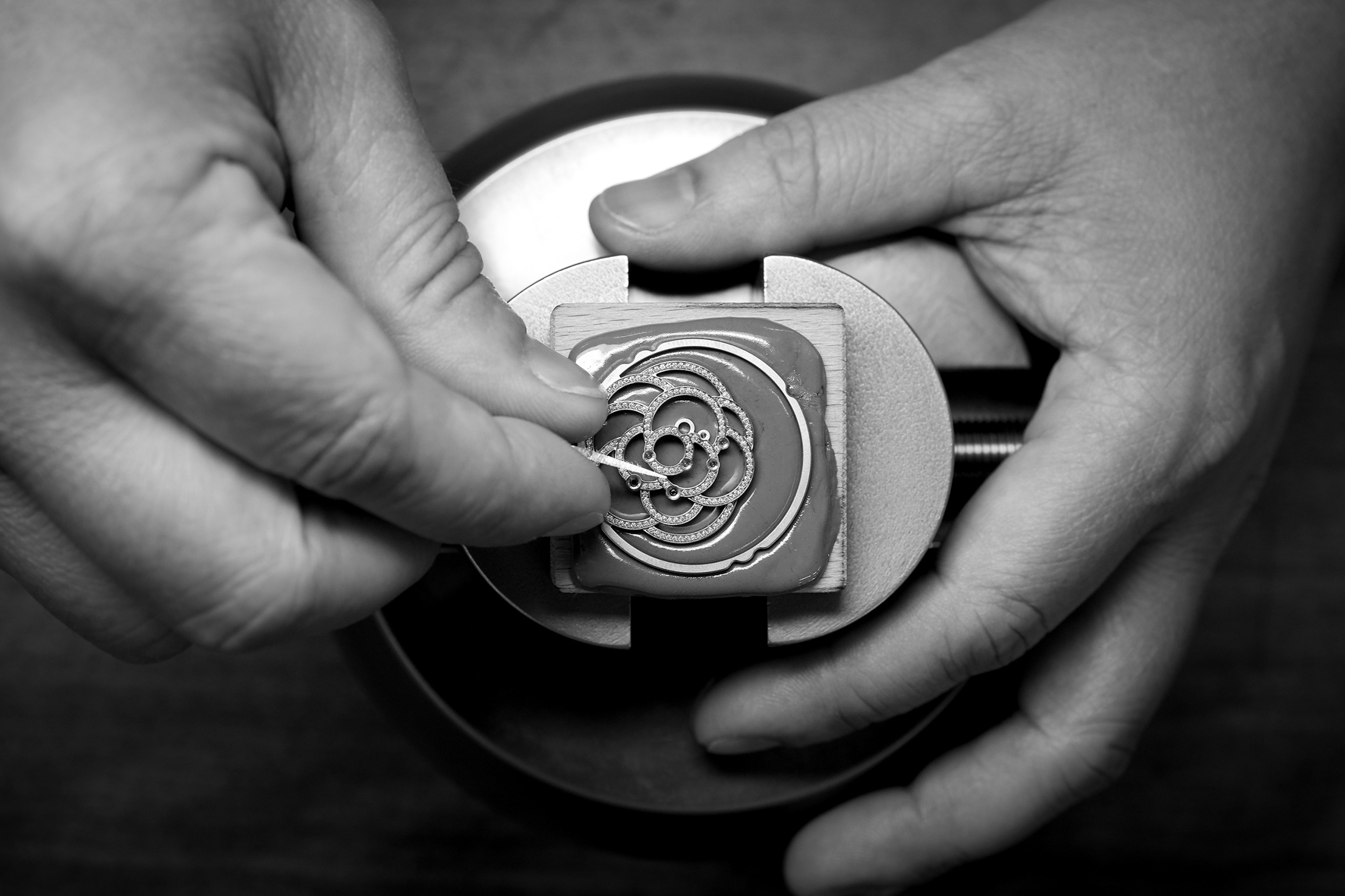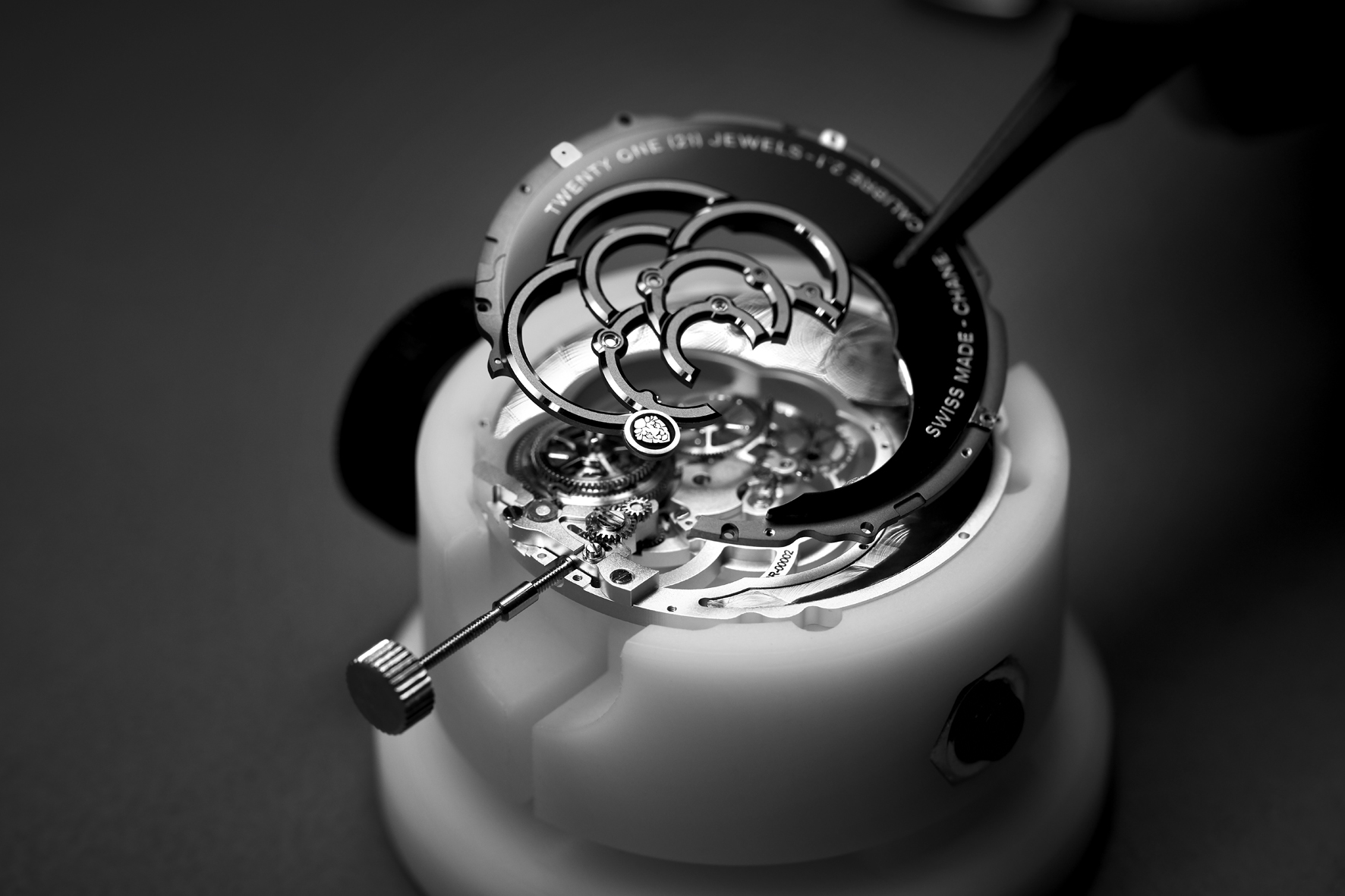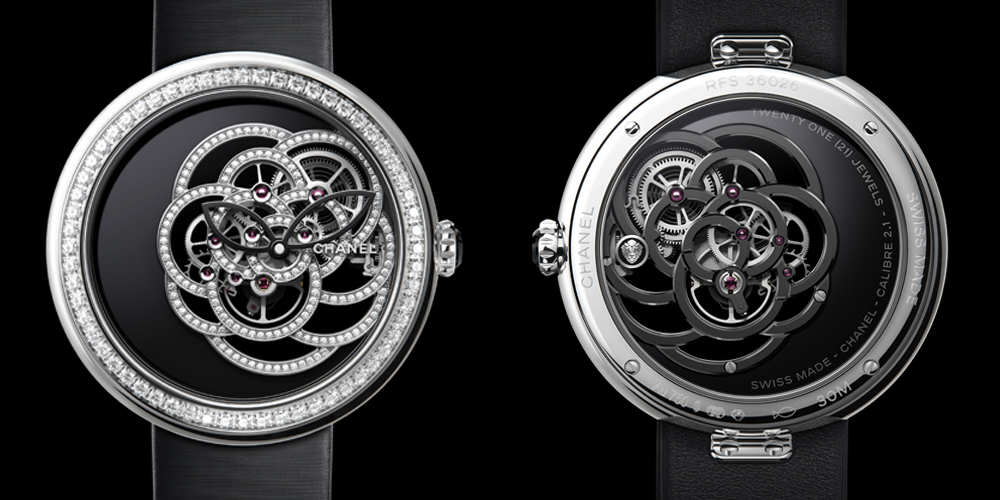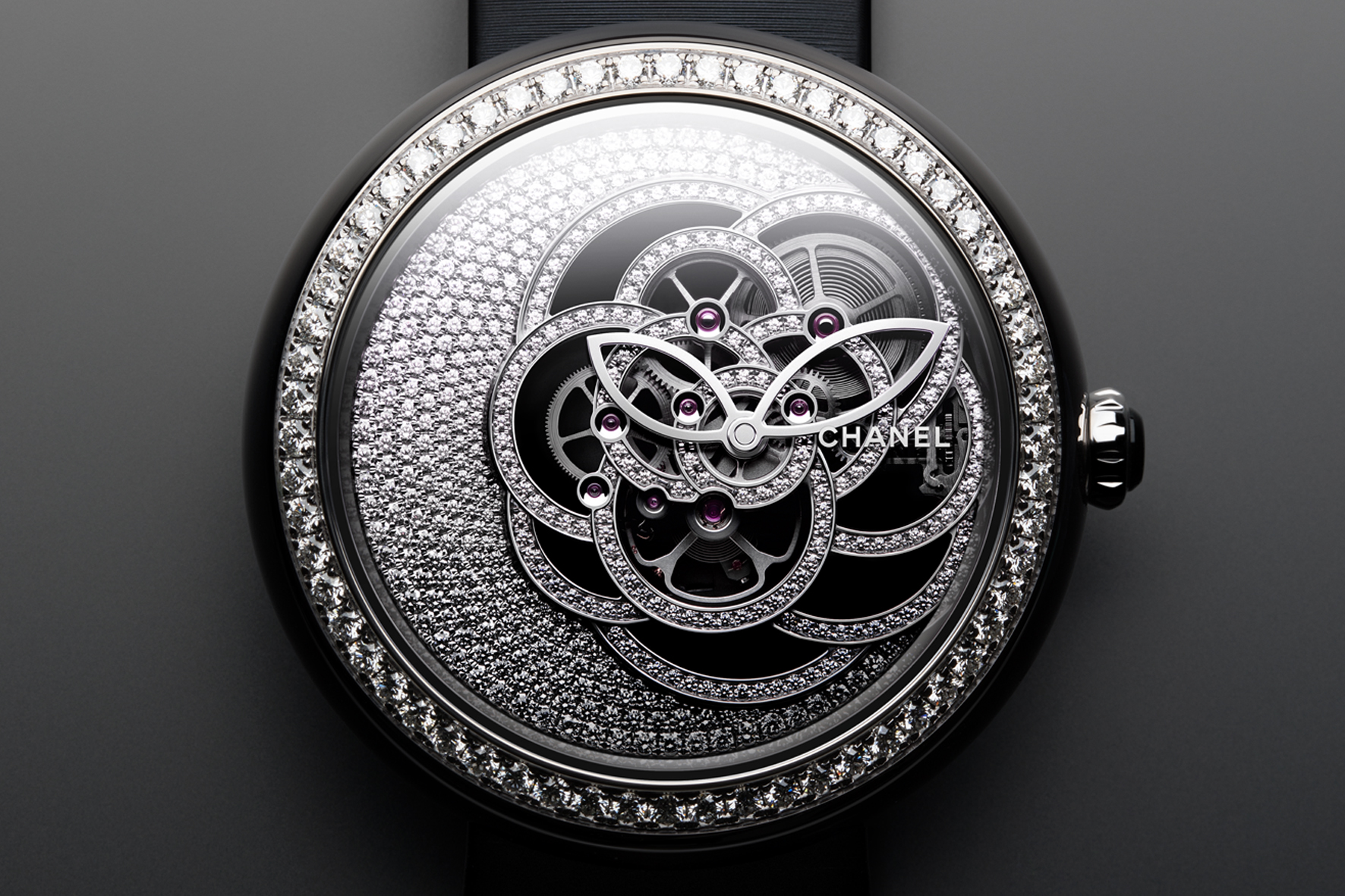Chanel: Mademoiselle Privé Camélia Squelette
6 September 2018“Chez” Chanel, the Mademoiselle Privé collection celebrates the Métiers d’Art, combining the excellence of artisan know-how and the delicacy of the symbols of the universe of the Maison, rich in femininity.
This collection opens the door to the intimate world of Gabrielle Chanel, and showcases her most cherished symbols and objects she loved to have around her. In the hands of the finest master artisans – enamellers, engravers, carvers and stone-setters – this collection adds yet another chapter to Chanel’s creative saga and uncovers new grounds for expressing unsurpassed skill and know-how of the Métiers d’Art craftsmanship used in Fine Watchmaking and High Jewelry.


For 2018, Chanel presents for the first time a Mademoiselle Privé watch fitted with a Fine Watchmaking movement, the Calibre 2 originally created for the 30th anniversary of the Première watch. This time the movement returns in its Calibre 2.1 Camélia Skeleton version with a round mainplate. It is a hand-wound, in-house mechanical movement with a 48-hour power reserve and a 4Hz frequency. With its ethereal geometry tracing a Camellia flower, this movement was drawn and designed in-house by the Chanel Watchmaking Creative Studio and developed and assembled by the Chanel manufacture in Switzerland.

The Mademoiselle Privé Camélia Squelette watch is available in two versions, both with a 37.5 mm case in 18K white gold, a white gold bezel with 60 brilliant-cut diamonds and a black satin strap with a double folding clasp in white gold with 80 brilliant-cut diamonds. A first model features a dial with a black onyx auxiliary upper plate and a white gold skeleton with 185 brilliant-cut diamonds (retail price: 90,000 Euros). Even more precious is the second version, whose dial is set with 242 brilliant-cut diamonds (retail price: 115,000 Euros).

In becoming a showcase for Fine Watchmaking, the Mademoiselle Privé collection opens a new chapter in its creative history. Its aesthetic qualities and technical skill are elevated to Métiers d’Art in their own right.
By Valeria Garavaglia
